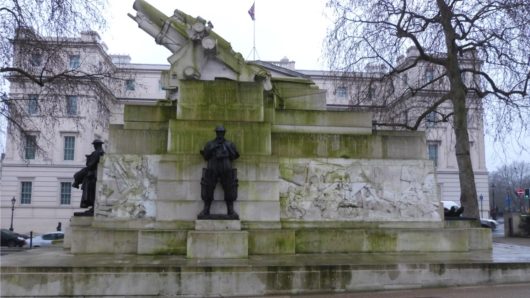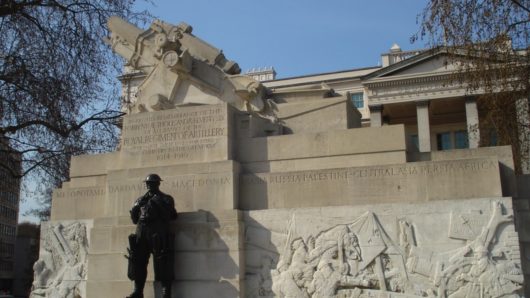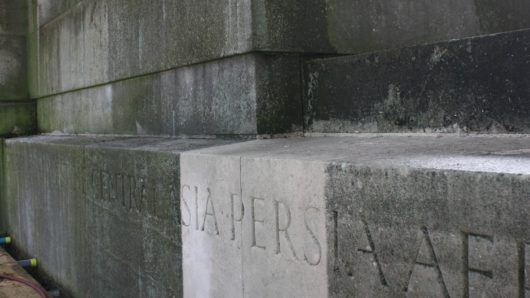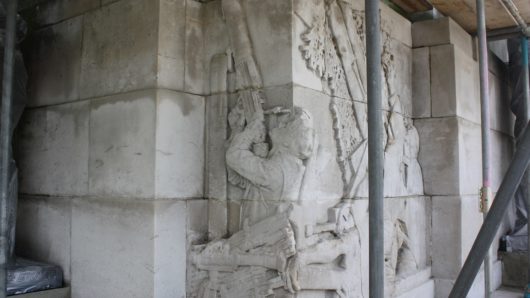The Royal Artillery Memorial, London - DBR (London) Limited
The Problem
The Royal Artillery Memorial suffers from a number of inter-related problems. It is set in a very polluted environment with high levels of exhaust emissions, it is shaded by two large plane trees, and its design means that rainwater tends to be retained on the horizontal areas of the memorial. As a result, it has suffered from algal growth as well as erosion of the fine relief carvings. The maintenance used to be carried out regularly, with the stonework cleaned every few months using high-pressure water. Unfortunately, this had the effect of opening up the pores of the stone even more and making colonisation by algae even easier. In order to reduce the damage, a comprehensive programme of investigation was carried out to try to find a more suitable longer-term solution.
The Solution
In 2011, DBR London was commissioned by English Heritage to undertake major conservation and restoration work on the Memorial. Restorative Techniques ThermaTech was specified as an effective, non-destructive cleaning method. DBR’s technicians used the machine at a temperature of 150°C with a 45° nozzle. This had the desired effect of removing the algae and discoloration that had built up. The stone was further treated with an algal growth inhibiting agent; the joints were re-pointed with hydraulic lime mortar; and a protective shelter coat was applied to the stone carvings.
The Outcome
Although the Royal Artillery Memorial still suffers from the same problems, cleaning is now needed less often than before, and the ThermaTech® has been specified for all future maintenance. This will help it to be preserved for continued remembrance in the future.
Our products have been used to restore a wide variety of buildings




